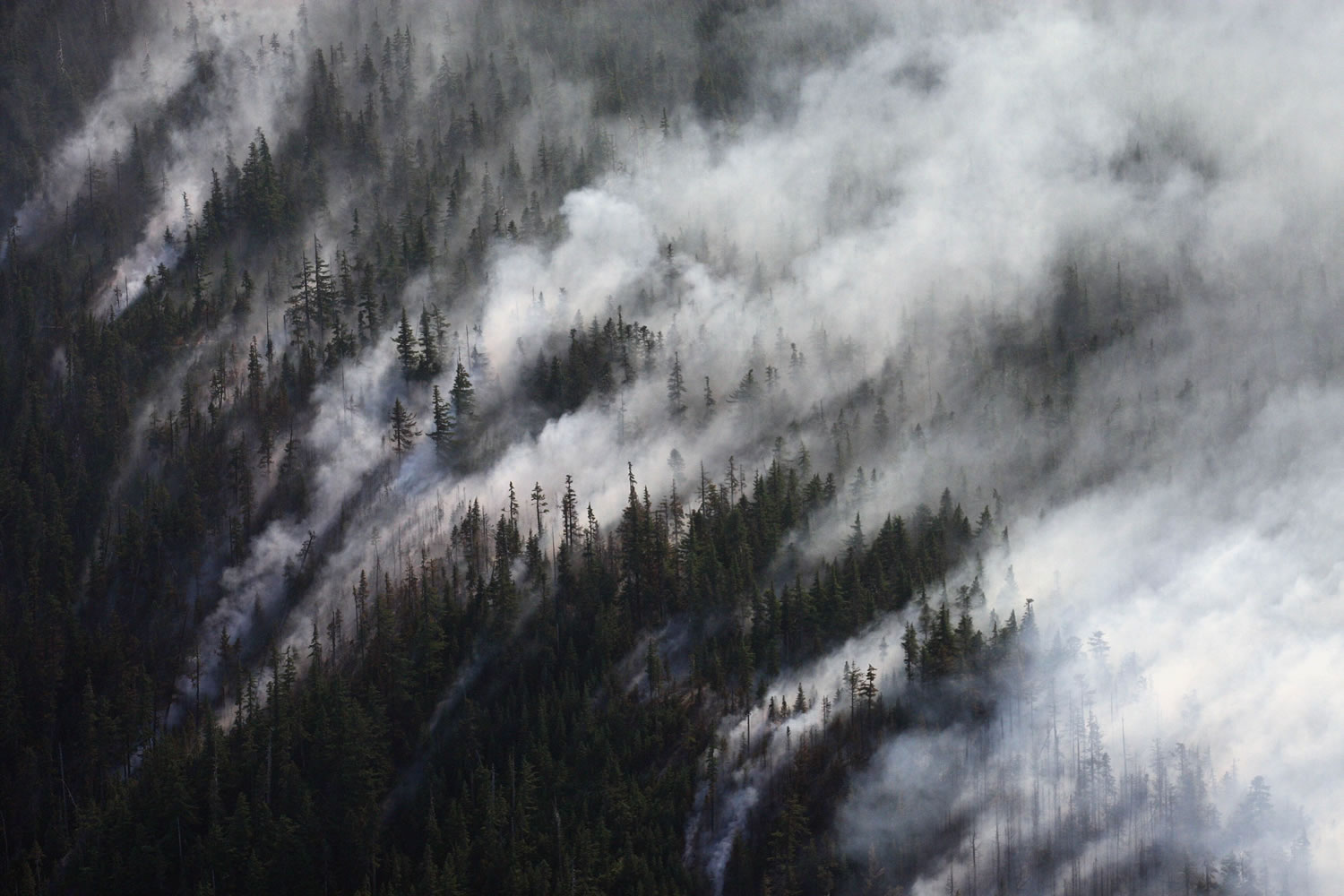PORTLAND — Fire crews dealt with a beating sun, uphill slopes and strong wind gusts as they struggled to contain a blaze on the north side of Mount Hood that got a boost midday Saturday from a rush of oxygen.
A layer of warm air lifted over the Dollar Lake fire Saturday, allowing oxygen to rush into the blaze and sending smoke into towns nearby.
Then, with the noon sun hanging overhead and drying out the forest canopy, fires were able to run unabated through uphill slopes. East winds helped push the fire runs, but they stayed within the perimeter established by fire crews.
The Dollar Lake fire had burned 4,600 acres as of Saturday morning. It drew no closer Saturday to the Bull Run Watershed, which supplies 900,000 people in Portland with water. The blaze was about 16 miles south of Hood River and 3 miles from the watershed.
A spot fire on the wildfire’s western flank broke through lines late Saturday and required air tankers to drop flame retardant on the area, but fire spokesman Peter Frenzen said he didn’t expect the blaze to spread beyond occasional spot fires.
The fire runs carried through the dried canopy until they reached hillsides facing away from the sun, which were shaded and still wet from a particularly rainy spring and summer in Western Oregon.
“It went along into the canopy until it ran into a slope facing the wrong direction and it stopped,” Frenzen said. “These runs that it’s making are occurring in the canopy that’s dried out, but the surface fields are still remembering the wet spring and summer we had.”
Frenzen said the fire hitting wet areas was like “a sponge you put a blowtorch on,” noting that the fields might singe, but would not catch fire.
About 1 p.m. Saturday, the warm air thermal cap — called an inversion — lifted after days of trapping cool, smoky air close to the ground. Columns of smoke directed by northeastern winds blew into communities nearby.
Frenzen said teams laid down more than one mile of hose and deployed all seven helicopters to control the fire’s west end.
Officials were uncertain of the magnitude of the fire after the inversion lifted. The region’s hot, dry weather helped the fire along.
“The warming trend we’ve been receiving is sort of peaking today,” said fire spokeswoman Alexis West. “We’re not surprised about its behavior so far.”
The areas of Pinnacle Ridge and Vista Ridge are of the greatest concern, West said, and firefighters have focused their attention there.
The fire began on Aug. 27.
The U.S. Forest Service reported the fire was no longer threatening communities but on Saturday closed a few more campgrounds, roads and trails. Officials have said no structures were in imminent danger.
Unburned fuels ignited in the Ladd Creek drainage, and air tankers made four drops of a fire retardant in a 4-acre spot on Cathedral Ridge late Friday.
Wet conditions left after a rainy spring and cool summer worked against crews too, making it difficult to ignite fires intentionally to remove fuel.



